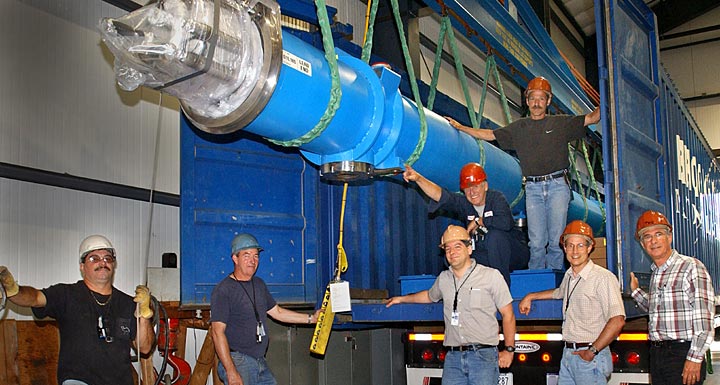LHC Design and Construction

BNL engineers with the first of 20 BNL-built superconducting magnets for the LHC.
Starting in 1996, Brookhaven scientists and engineers designed and constructed 20 of the total 1,200 superconducting magnets for the LHC. Now in place, these specialized dipole magnets, each weighing more than 25 tons, have guided the LHC's two counter-rotating beams of protons into collision. Tied to this effort, Brookhaven scientists also tested much of the associated superconducting wires and cables for the machine.
In addition, Brookhaven scientists and engineers designed and built key parts of the ATLAS detector, including: pieces of the liquid argon calorimeter – a device that measures precisely the energy and positions of electrons and photons emerging from the proton-proton collisions produced in the center of the experiment – and parts of the muon spectrometer – an outer tracking device meant to identify muons, subatomic particles similar to electrons but 200 times more massive.



